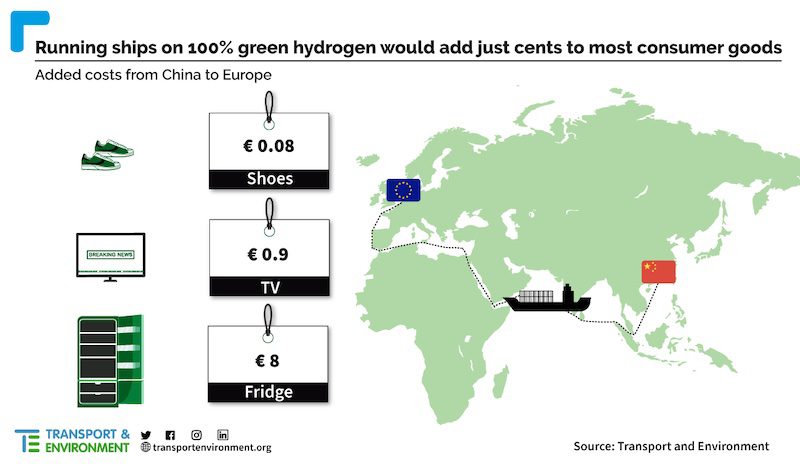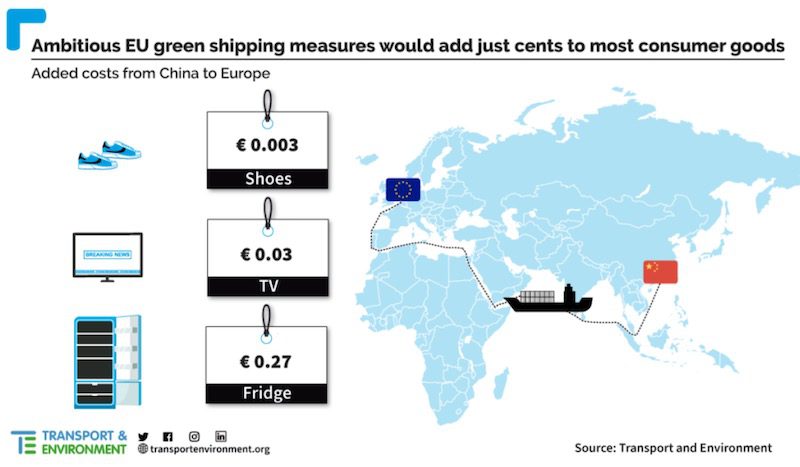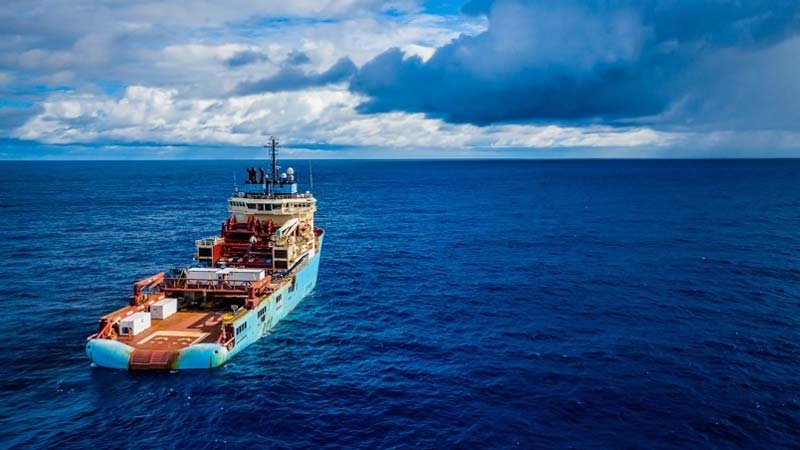Running cargo ships entirely on green hydrogen-based fuels would add less than 15 cents to a new pair of Nikes or up to $12 for a new fridge, according to a new study published this week.
The new study was published Tuesday by Transport & Environment (T&E), Europe’s leading clean transport campaign group, and analysed the likely cost increase in seaborne transport if the sector were to fully decarbonise.
Specifically, T&E analysis followed along the lines of the proposed increase to the FuelEU Maritime (FEUM) and the Maritime Emissions Trading Scheme (ETS) and found that running ships on renewable hydrogen would have almost no impact on the price of consumer goods.
T&E specifically claim that their analysis “debunks claims by the shipping industry” that full decarbonisation of the industry would be prohibitively expensive and result in exorbitant price hikes for consumers.

“Green shipping would add less than (€EU)10 cents to a pair of Nikes,” said Faig Abbasov, shipping director at T&E.
“This is a tiny price to pay for cleaning up one of the dirtiest industries on earth. In a year where shipping companies are making bigger profits than Facebook, Google, Amazon, and Netflix combined, it is right to question whether shipping companies are doing enough.”
The study showed that, across the board, green measures to decarbonise the shipping sector would not adversely affect the price of shipped goods.
Specifically, the extra cost of achieving the ambitious Fit for 55 (FF55) package proposed in the European Commission – which includes a suite of regulatory measures to ensure that the EU economy meets the newly set economy-wide target of achieving 55% emissions reduction by 2030 – would make little in the way of any impact on consumer prices.
For example, according to T&E, a pair of Nikes would cost just €0.003 more, a television €0.03, and a refrigerator up to €0.27 more.

But even in a worst case scenario – which is to say, a full decarbonisation by converting to green hydrogen-based fuels – the cost increase represents approximately a 1.11% to 1.70% increase in the seaborne freight costs from the average historical levels.
Similarly, therefore, the price of a pair of Nikes would cost only €0.08 more, a television €0.94, and a refrigerator up to €7.52 more.
“A decade ago, the only hope of decarbonising shipping was halting global trade itself,” said Faig Abbasov.
“Now we have the technology, but what is lacking is a market signal for green hydrogen producers. As a world leader in shipping, the EU should set an ambitious green e-fuel mandate that guarantees hydrogen fuel suppliers a market. Green shipping is possible. It is a question of political will.”
Joshua S. Hill is a Melbourne-based journalist who has been writing about climate change, clean technology, and electric vehicles for over 15 years. He has been reporting on electric vehicles and clean technologies for Renew Economy and The Driven since 2012. His preferred mode of transport is his feet.

